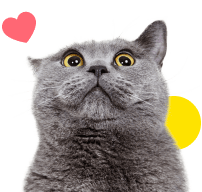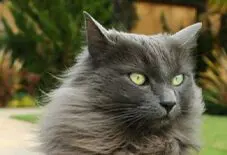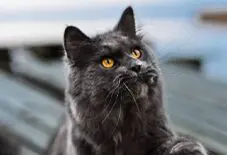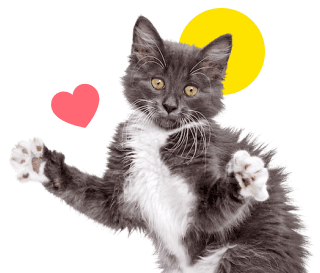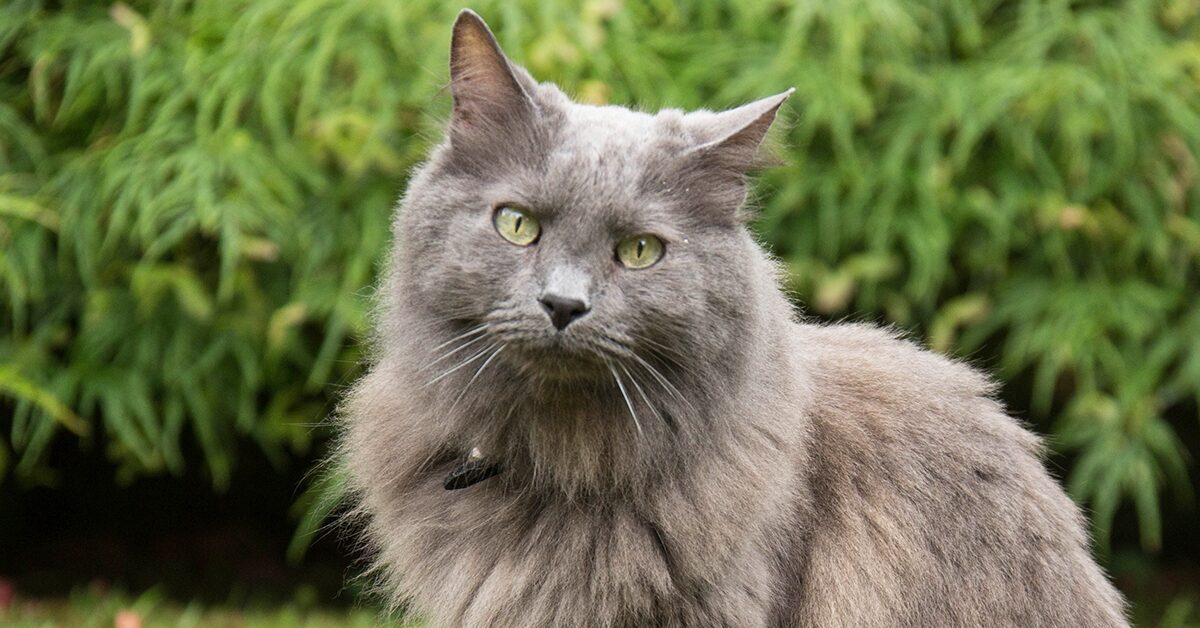
Meet the Nebelung
High Kitty I.Q.
Best Fur Friend
Independent Kitty
Looking for a loyal and loving lap cat who can chill while you’re at work? I’m the breed for you! We Nebelungs are a bit shy but once I’ve bonded with my human I’ll stick to you like glue! I do best in a quiet environment and I’ll probably hide if strangers come over, so socialize me early and often so I can get over that anxiety. Young children and most dogs are too chaotic for me, but I can get along with another cat. I much prefer the company of a few select humans, though, and I’m prrrfectly content on my own if you have to work – but when you get home you better give me the attention and playtime I deserve!
My beautiful blue coat needs a twice weekly brushing, but I won’t mind – I love spending time with you. I’m also particular about my litter box, so keep it spotless! I’m a creature of habit so I do best in a home where the daily routine doesn’t change much. Even though I’m a very rare breed, my unique looks and gentle temperament make me one of the hidden gems of the cat world.
Ready to learn more about me? Let’s dig in.
Ready to learn more about me? Let’s dig in.
 My Many Looks
My Many Looks
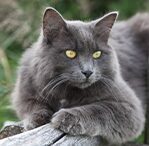
Blue
 My Breed Characteristics
My Breed Characteristics
 Furbulous Fact
Furbulous Fact
Even though my breed comes from the US, our name is all German! Nebel is the German word for “fog” or “mist,” and we are nicknamed “creature of the mist” because of our blue-grey color and mysterious aura. Our name also comes from a medieval Germanic epic poem calledthe Nibelungenlied, which was later adapted into an opera by German composer Richard Wagner. Siegfried and Brunhilde – the father and mother of my breed – were named after characters from this famous German epic. The Nebelung breed name has many layers, just like me!
 As I Grow Up
As I Grow Up
As you can see, we Nebelungs age pretty gracefully. Here are a few key milestones in my growth & development to be aware of as I grow up from a kitten to an adult and senior!
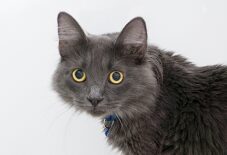
Kitten3-9 Months
I get nervous around new people so socialize me early and often so I don’t grow up scared of strangers.
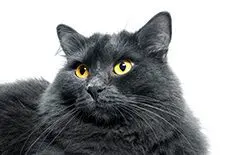
Adult1.5-2 Years
Even though I’m fine at home alone, make sure I have enough toys to keep me mentally stimulated when you’re not there to play with me.
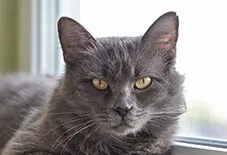
Senior11-13 Years
I’m slowing down so make sure to switch to a senior formula cat food and take me for twice yearly vet checkups.
 History of My Breed
History of My Breed
We Nebelungs are a very new breed. In the early 1980s, my earliest ancestors were born in the United States. The first, born in 1984, was a male kitten named Siegfried. Siegfried’s mother, Elsa, was a black Domestic Shorthair owned by a human named Cora Cobb, and his father was a longhaired cat that resembled a Russian Blue. Siegfried was the only longhaired blue kitten in the litter. In 1985, Elsa had another litter and produced one more longhaired blue kitten, a female that Cora Cobb named Brunhilde. Cobb fell in love with the unique look of these two special kittens, which had the silvery blue coloring of a Russian Blue and the silky medium-length coat of the domestic. Siegfried and Brunhilde produced a litter in 1986 and the Nebelung breed was born!
Cobb wanted to start a breeding program and get the Nebelung officially recognized as a separate breed, not just as longhaired Russian Blue cats. In 1987, with the help of a geneticist named Dr. Solveig Pflueger, she applied for new breed status with The International Cat Association. She worked hard on her breeding program over the next ten years and our strict breed standard was based on a type of longhaired blue cat that had been imported from Russia to Europe in the early 19th century.
In 1997, TICA officially recognized the Nebelung as our own breed. We were also recognized by other major world cat registries, including the World Cat Federation and the American Cat Fanciers Association (not to be confused with the Cat Fanciers’ Association (CFA), who still does not recognize us). Today, we are still an incredibly rare breed and it can be hard for humans to get their hands on one of us, but those lucky enough to bring a Nebelung into their home soon learn why we are such a rare prize.
 Pawesome Cats to Parent
Pawesome Cats to Parent
In addition to purebred Nebelungs like me, there are tons of prrrfectly sweet mixed-breed Nebelung that are looking to find their furever homes. You can learn where to find your next pet below!
Be extra vigilant about cleaning your Nebelung’s litter box.
While all cats want a clean bathroom, the Nebelung can be particularly picky about their litter box. Make sure you regularly scoop and keep the box extra clean to avoid any accidents.
Be on the lookout for common cat conditions.
Even though Nebelung cats are a healthy breed and don’t have any known genetic diseases that are more prevalent for the breed, they can still suffer from other issues. Be on the lookout for common cat conditions like hyperthyroidism or bladder stones.
Be prepared for twice a week brushing.
Nebelungs have long beautiful hair that also makes them moderate shedders. Make sure you have the time to provide regular brushing to keep their coat healthy.
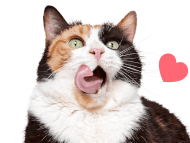
 Why Get Cat Insurance?
from Pumpkin®
Why Get Cat Insurance?
from Pumpkin®
While Nebelungs are a generally healthy breed, cat-astrophes can happen to any cat at any age. If your kitty gets hurt or sick, pet insurance can help you say ‘yes’ to the best care, even when it’s costly. When it comes to shopping for this breed, you’ll want to choose insurance plans like Pumpkin's, which can help cover the costs associated with the hereditary conditions Nebelungs are prone to developing. While a reputable breeder will conduct genetic testing on your kitty’s parents to help minimize the chances of passing down hereditary conditions, they can’t always be avoided. Let’s look at some common ones, and how Pumpkin Cat Insurance plans could help cover the cost of care!
 Heart Disease
Heart Disease
Nebelungs may develop heart problems, specifically Hypertrophic Cardiomyopathy (HCM). In this condition, the muscle walls of the heart thicken causing a decline in cardiac function. While there is no cure, heart disease can be managed with medication and dietary changes.
- Cost to Treat
- $500-$3,000
- Pumpkin Pays Back*
- $450-$2,700
 Diabetes Mellitus
Diabetes Mellitus
Cats with diabetes do not produce enough insulin to convert the glucose (sugar) in their blood into cellular energy. This can cause excessive urination, weight loss, and can lead to various infections. Diabetes can be managed with diet change, weight loss, and insulin injections.
- Cost to Treat
- $500-$5,000
- Pumpkin Pays Back*
- $450-$4,500
 Hyperthyroidism
Hyperthyroidism
This condition occurs when a cat has an overactive thyroid gland and can lead to more serious diseases if not treated. Hyperthyroidism can be treated with radioactive iodine therapy, surgery to remove the thyroid gland, or medication.
- Cost to Treat
- $200-$1,000
- Pumpkin Pays Back*
- $180-$900
 Bladder Stones
Bladder Stones
Nebelungs are prone to developing bladder stones. This condition occurs when minerals build up and form stones that make urination extremely painful to impossible, depending on their size. While smaller stones can be removed via catheter, larger stones must be surgically removed.
- Cost to Treat
- $500 to $3,500
- Pumpkin Pays Back*
- $450-$3,150
*Example illustrates reimbursement of a covered vet bill at a 90% reimbursement rate, where the annual deductible had already been satisfied and the annual limit had not yet been met. Coverage and reimbursement results vary based on policy options.
